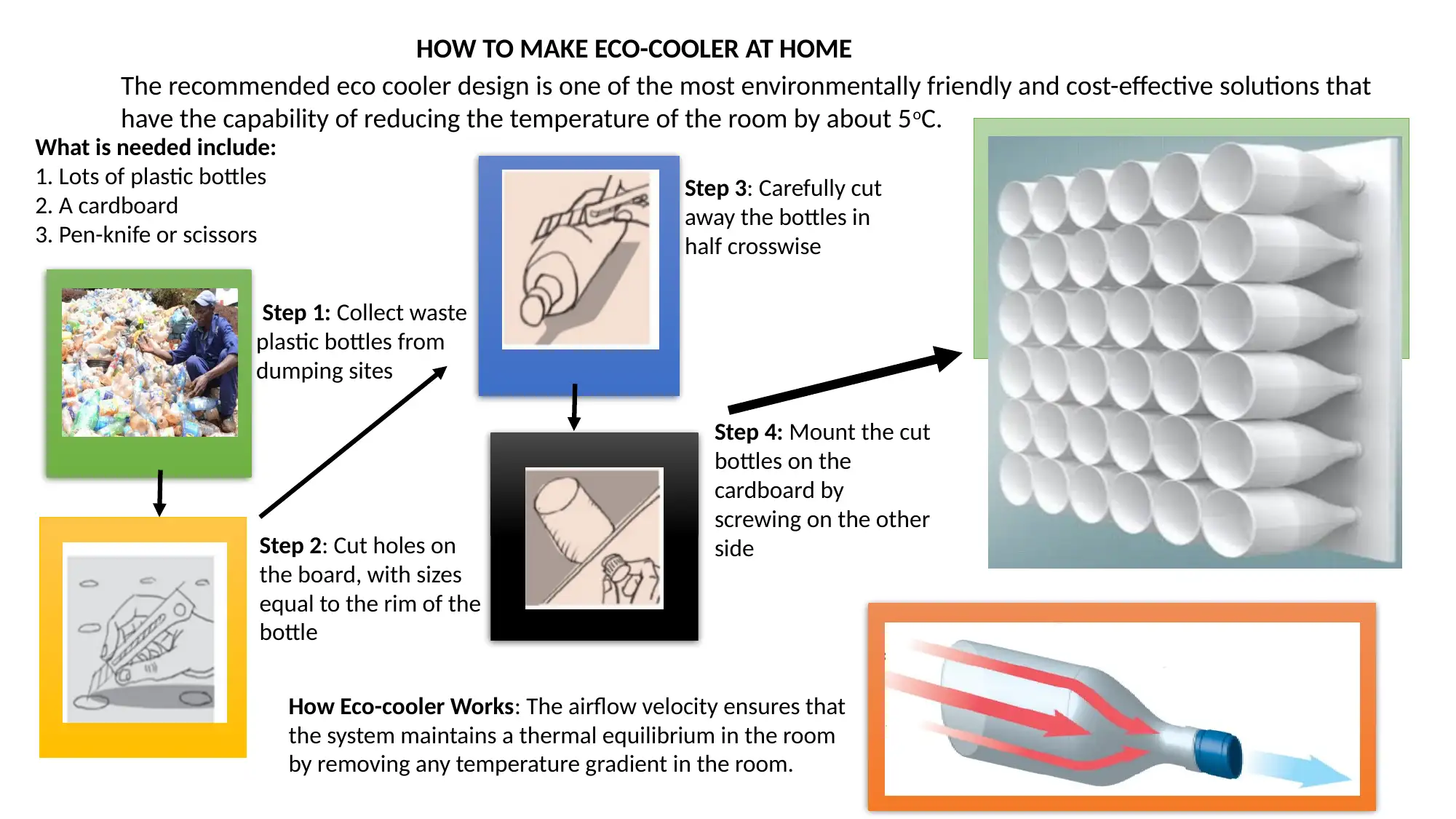Engineering for People Challenge: Eco-Cooler Design Project, GEEN1128
VerifiedAdded on 2022/08/27
|3
|515
|30
Project
AI Summary
This project focuses on the design and implementation of an eco-cooler, a cost-effective and environmentally friendly cooling system. The design utilizes readily available waste plastic bottles and cardboard to reduce room temperature. The solution details the step-by-step construction process, materials needed, and the working principle behind the eco-cooler, which relies on airflow velocity to maintain thermal equilibrium. The assignment addresses the Engineering for People Design Challenge, emphasizing the importance of sustainable solutions in the context of Makers Valley, South Africa. It also includes relevant references and discusses the eco-cooler's potential in waste management and sustainable living. The project covers design criteria, alternative options, implementation plans, and student reflections, making it a comprehensive resource for engineering students.
1 out of 3





![[object Object]](/_next/static/media/star-bottom.7253800d.svg)